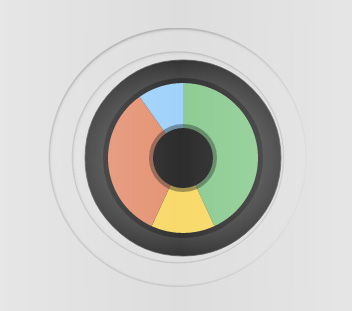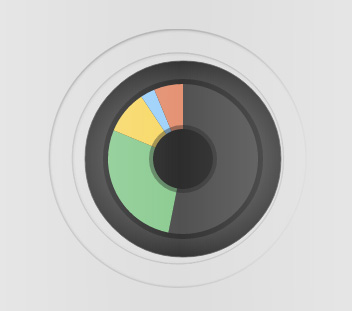A friend asks me, "Reid, what do you think of my new deck idea?" and shows me a list of cards.
"You only wrote down 36 cards," I say.
"Well, the rest are lands," my friend says.
"Which lands?" I respond.
This is a conversation I seem to have nearly every day of my life. The "friend" can take a variety faces, including players of every level of expertise. The fact is that building a mana base is the most neglected aspect of deck building. In reality, it should be the one you give the greatest amount of care.
It's impossible to see the real picture without understanding your mana base. Looking at my friend's list of 36 cards is like seeing a painting without a background, or reading a story without a setting. You cannot know what's possible and what's impossible before you have your mana base.
Building a mana base from scratch is a daunting process, but with the guidelines I'll give you today, you'll have a solid place to start from. Like everything else, the more you practice and the more attention you give to building your mana bases, the easier it will become.
If you're interested in a refresher course, you can find the "Basics of Mana" here. The mana base of a single-colored deck is often relatively straightforward. Today, the emphasis will be on decks of two or more colors. Let's start by establishing a frame of reference for how badly a given deck needs to draw each of its colors of mana.
The Scale of Colored Mana Necessity
These are the guidelines that I live by. Remember, they're just guidelines, not hard and fast rules. They're informed by my own long experience, as well as the opinions of other players and deck builders. In particular, I owe a special thanks to Hall of Famer Frank Karsten's writings on the topic.
These questions are different between Constructed and Limited for two reasons. The first and more obvious reason is Constructed decks are 60 cards and play with more lands than Limited decks, which are 40 cards. The second reason is that Constructed formats are faster and more powerful. Being unable to cast your spells on time is more costly and your standards for consistency should be higher.
1. I don't want lands in my deck that can't cast—this—card.
Once in a while, a card is printed that has such steep colored mana requirements that you have to build your entire mana base with it in mind.
Consider, for example, a black-green deck that wants to play with Phyrexian Obliterator or a five-color control deck that wants to play with Cruel Ultimatum. There's little sense in asking the question of "How much black mana do I want in order to play with Phyrexian Obliterator?" The wise answer is simply, "All of it."
If you play your seventh land, ready to cast your Cruel Ultimatum, and look down to find a basic Plains and a basic Forest in play, no matter what else might be going on, you cannot cast your spell on time. This is a situation you should do your best to avoid.
There are a few famous cases of decks with Nightveil Specter or Figure of Destiny also playing with Mutavault, a colorless land. This comes up only when both cards are so important to the deck that they simply cannot be passed up. Try to avoid situations like this, but when they do come up, just recognize the risk you're taking and make an educated decision.
Lands like Urborg, Tomb of Yawgmoth or Twilight Mire can also complicate this question a little bit.
2. I don't want to keep an opening hand without—this—color of mana.
This is where a deck is entirely or almost entirely centered around a single color. You cannot operate at all if you don't draw this color of mana. A deck like this might have a color distribution that looks like this, where the full circle represents the entire deck (this is a tool you can look at for any deck on DailyMTG.com under the Stats header). You can see how this one is mostly green.

Gaudenis Vidugiris, at Pro Tour Khans of Tarkir


a:24:{i:0;O:8:"stdClass":3:{s:9:"card_meta";O:8:"stdClass":2:{s:5:"title";s:13:"Elvish Mystic";s:22:"field_card_image_front";a:0:{}}s:4:"type";s:8:"creature";s:10:"deck_count";s:1:"4";}i:1;O:8:"stdClass":3:{s:9:"card_meta";O:8:"stdClass":2:{s:5:"title";s:15:"Sylvan Caryatid";s:22:"field_card_image_front";a:0:{}}s:4:"type";s:8:"creature";s:10:"deck_count";s:1:"4";}i:2;O:8:"stdClass":3:{s:9:"card_meta";O:8:"stdClass":2:{s:5:"title";s:14:"Voyaging Satyr";s:22:"field_card_image_front";a:0:{}}s:4:"type";s:8:"creature";s:10:"deck_count";s:1:"4";}i:3;O:8:"stdClass":3:{s:9:"card_meta";O:8:"stdClass":2:{s:5:"title";s:18:"Courser of Kruphix";s:22:"field_card_image_front";a:0:{}}s:4:"type";s:8:"creature";s:10:"deck_count";s:1:"4";}i:4;O:8:"stdClass":3:{s:9:"card_meta";O:8:"stdClass":2:{s:5:"title";s:23:"Polukranos, World Eater";s:22:"field_card_image_front";a:0:{}}s:4:"type";s:8:"creature";s:10:"deck_count";s:1:"4";}i:5;O:8:"stdClass":3:{s:9:"card_meta";O:8:"stdClass":2:{s:5:"title";s:19:"Eidolon of Blossoms";s:22:"field_card_image_front";a:0:{}}s:4:"type";s:8:"creature";s:10:"deck_count";s:1:"2";}i:6;O:8:"stdClass":3:{s:9:"card_meta";O:8:"stdClass":2:{s:5:"title";s:14:"Arbor Colossus";s:22:"field_card_image_front";a:0:{}}s:4:"type";s:8:"creature";s:10:"deck_count";s:1:"2";}i:7;O:8:"stdClass":3:{s:9:"card_meta";O:8:"stdClass":2:{s:5:"title";s:14:"Doomwake Giant";s:22:"field_card_image_front";a:0:{}}s:4:"type";s:8:"creature";s:10:"deck_count";s:1:"4";}i:8;O:8:"stdClass":3:{s:9:"card_meta";O:8:"stdClass":2:{s:5:"title";s:17:"See the Unwritten";s:22:"field_card_image_front";a:0:{}}s:4:"type";s:7:"sorcery";s:10:"deck_count";s:1:"4";}i:9;O:8:"stdClass":3:{s:9:"card_meta";O:8:"stdClass":2:{s:5:"title";s:22:"Nylea, God of the Hunt";s:22:"field_card_image_front";a:0:{}}s:4:"type";s:8:"creature";s:10:"deck_count";s:1:"1";}i:10;O:8:"stdClass":3:{s:9:"card_meta";O:8:"stdClass":2:{s:5:"title";s:26:"Pharika, God of Affliction";s:22:"field_card_image_front";a:0:{}}s:4:"type";s:8:"creature";s:10:"deck_count";s:1:"1";}i:11;O:8:"stdClass":3:{s:9:"card_meta";O:8:"stdClass":2:{s:5:"title";s:12:"Hornet Queen";s:22:"field_card_image_front";a:0:{}}s:4:"type";s:8:"creature";s:10:"deck_count";s:1:"2";}i:12;O:8:"stdClass":3:{s:9:"card_meta";O:8:"stdClass":2:{s:5:"title";s:22:"Nykthos, Shrine to Nyx";s:22:"field_card_image_front";a:0:{}}s:4:"type";s:4:"land";s:10:"deck_count";s:1:"4";}i:13;O:8:"stdClass":3:{s:9:"card_meta";O:8:"stdClass":2:{s:5:"title";s:16:"Temple of Malady";s:22:"field_card_image_front";a:0:{}}s:4:"type";s:4:"land";s:10:"deck_count";s:1:"4";}i:14;O:8:"stdClass":3:{s:9:"card_meta";O:8:"stdClass":2:{s:5:"title";s:15:"Llanowar Wastes";s:22:"field_card_image_front";a:0:{}}s:4:"type";s:4:"land";s:10:"deck_count";s:1:"4";}i:15;O:8:"stdClass":3:{s:9:"card_meta";O:8:"stdClass":2:{s:5:"title";s:24:"Urborg, Tomb of Yawgmoth";s:22:"field_card_image_front";a:0:{}}s:4:"type";s:4:"land";s:10:"deck_count";s:1:"1";}i:16;O:8:"stdClass":3:{s:9:"card_meta";O:8:"stdClass":2:{s:5:"title";s:15:"Windswept Heath";s:22:"field_card_image_front";a:0:{}}s:4:"type";s:4:"land";s:10:"deck_count";s:1:"4";}i:17;O:8:"stdClass":3:{s:9:"card_meta";O:8:"stdClass":2:{s:5:"title";s:6:"Forest";s:22:"field_card_image_front";a:0:{}}s:4:"type";s:4:"land";s:10:"deck_count";s:1:"7";}i:18;O:8:"stdClass":3:{s:9:"card_meta";O:8:"stdClass":2:{s:5:"title";s:17:"Nissa, Worldwaker";s:22:"field_card_image_front";a:0:{}}s:4:"type";s:12:"planeswalker";s:10:"deck_count";i:0;}i:19;O:8:"stdClass":3:{s:9:"card_meta";O:8:"stdClass":2:{s:5:"title";s:12:"Thoughtseize";s:22:"field_card_image_front";a:0:{}}s:4:"type";s:7:"sorcery";s:10:"deck_count";i:0;}i:20;O:8:"stdClass":3:{s:9:"card_meta";O:8:"stdClass":2:{s:5:"title";s:16:"Setessan Tactics";s:22:"field_card_image_front";a:0:{}}s:4:"type";s:7:"instant";s:10:"deck_count";i:0;}i:21;O:8:"stdClass":3:{s:9:"card_meta";O:8:"stdClass":0:{}s:4:"type";s:5:"Other";s:10:"deck_count";i:0;}i:22;O:8:"stdClass":3:{s:9:"card_meta";O:8:"stdClass":2:{s:5:"title";s:16:"Nylea's Disciple";s:22:"field_card_image_front";a:0:{}}s:4:"type";s:8:"creature";s:10:"deck_count";i:0;}i:23;O:8:"stdClass":3:{s:9:"card_meta";O:8:"stdClass":2:{s:5:"title";s:11:"Hornet Nest";s:22:"field_card_image_front";a:0:{}}s:4:"type";s:8:"creature";s:10:"deck_count";i:0;}}
In Constructed, you'll want seventeen or eighteen sources of this color of mana. In Limited, you'll want eleven or twelve sources.
Note that if you want to see two sources of this color in your opening hand, you should aim for nineteen sources or more in Constructed.
3. This is a main color.
A main color is one that you're counting on seeing in every game. You hope to see it in your opening hand, but you're not necessarily compelled to mulligan if you don't. The color distribution might look something like this, as it did for Shaun McLaren's Pro Tour Khans of Tarkir deck.

Shaun McLaren, Top 8 at Pro Tour Khans of Tarkir


a:27:{i:0;O:8:"stdClass":3:{s:9:"card_meta";O:8:"stdClass":2:{s:5:"title";s:18:"Temple of Epiphany";s:22:"field_card_image_front";a:0:{}}s:4:"type";s:4:"land";s:10:"deck_count";s:1:"4";}i:1;O:8:"stdClass":3:{s:9:"card_meta";O:8:"stdClass":2:{s:5:"title";s:16:"Mystic Monastery";s:22:"field_card_image_front";a:0:{}}s:4:"type";s:4:"land";s:10:"deck_count";s:1:"4";}i:2;O:8:"stdClass":3:{s:9:"card_meta";O:8:"stdClass":2:{s:5:"title";s:17:"Temple of Triumph";s:22:"field_card_image_front";a:0:{}}s:4:"type";s:4:"land";s:10:"deck_count";s:1:"4";}i:3;O:8:"stdClass":3:{s:9:"card_meta";O:8:"stdClass":2:{s:5:"title";s:11:"Shivan Reef";s:22:"field_card_image_front";a:0:{}}s:4:"type";s:4:"land";s:10:"deck_count";s:1:"2";}i:4;O:8:"stdClass":3:{s:9:"card_meta";O:8:"stdClass":2:{s:5:"title";s:17:"Battlefield Forge";s:22:"field_card_image_front";a:0:{}}s:4:"type";s:4:"land";s:10:"deck_count";s:1:"1";}i:5;O:8:"stdClass":3:{s:9:"card_meta";O:8:"stdClass":2:{s:5:"title";s:14:"Flooded Strand";s:22:"field_card_image_front";a:0:{}}s:4:"type";s:4:"land";s:10:"deck_count";s:1:"4";}i:6;O:8:"stdClass":3:{s:9:"card_meta";O:8:"stdClass":2:{s:5:"title";s:6:"Island";s:22:"field_card_image_front";a:0:{}}s:4:"type";s:4:"land";s:10:"deck_count";s:1:"2";}i:7;O:8:"stdClass":3:{s:9:"card_meta";O:8:"stdClass":2:{s:5:"title";s:6:"Plains";s:22:"field_card_image_front";a:0:{}}s:4:"type";s:4:"land";s:10:"deck_count";s:1:"1";}i:8;O:8:"stdClass":3:{s:9:"card_meta";O:8:"stdClass":2:{s:5:"title";s:8:"Mountain";s:22:"field_card_image_front";a:0:{}}s:4:"type";s:4:"land";s:10:"deck_count";s:1:"3";}i:9;O:8:"stdClass":3:{s:9:"card_meta";O:8:"stdClass":2:{s:5:"title";s:17:"Seeker of the Way";s:22:"field_card_image_front";a:0:{}}s:4:"type";s:8:"creature";s:10:"deck_count";s:1:"1";}i:10;O:8:"stdClass":3:{s:9:"card_meta";O:8:"stdClass":2:{s:5:"title";s:16:"Lightning Strike";s:22:"field_card_image_front";a:0:{}}s:4:"type";s:7:"instant";s:10:"deck_count";s:1:"4";}i:11;O:8:"stdClass":3:{s:9:"card_meta";O:8:"stdClass":2:{s:5:"title";s:9:"Magma Jet";s:22:"field_card_image_front";a:0:{}}s:4:"type";s:7:"instant";s:10:"deck_count";s:1:"4";}i:12;O:8:"stdClass":3:{s:9:"card_meta";O:8:"stdClass":2:{s:5:"title";s:15:"Banishing Light";s:22:"field_card_image_front";a:0:{}}s:4:"type";s:11:"enchantment";s:10:"deck_count";s:1:"2";}i:13;O:8:"stdClass":3:{s:9:"card_meta";O:8:"stdClass":2:{s:5:"title";s:19:"Goblin Rabblemaster";s:22:"field_card_image_front";a:0:{}}s:4:"type";s:8:"creature";s:10:"deck_count";s:1:"4";}i:14;O:8:"stdClass":3:{s:9:"card_meta";O:8:"stdClass":2:{s:5:"title";s:12:"Jeskai Charm";s:22:"field_card_image_front";a:0:{}}s:4:"type";s:7:"instant";s:10:"deck_count";s:1:"4";}i:15;O:8:"stdClass":3:{s:9:"card_meta";O:8:"stdClass":2:{s:5:"title";s:12:"Mantis Rider";s:22:"field_card_image_front";a:0:{}}s:4:"type";s:8:"creature";s:10:"deck_count";s:1:"4";}i:16;O:8:"stdClass":3:{s:9:"card_meta";O:8:"stdClass":2:{s:5:"title";s:17:"Anger of the Gods";s:22:"field_card_image_front";a:0:{}}s:4:"type";s:7:"sorcery";s:10:"deck_count";s:1:"2";}i:17;O:8:"stdClass":3:{s:9:"card_meta";O:8:"stdClass":2:{s:5:"title";s:16:"Stoke the Flames";s:22:"field_card_image_front";a:0:{}}s:4:"type";s:7:"instant";s:10:"deck_count";s:1:"4";}i:18;O:8:"stdClass":3:{s:9:"card_meta";O:8:"stdClass":2:{s:5:"title";s:26:"Sarkhan, the Dragonspeaker";s:22:"field_card_image_front";a:0:{}}s:4:"type";s:12:"planeswalker";s:10:"deck_count";s:1:"2";}i:19;O:8:"stdClass":3:{s:9:"card_meta";O:8:"stdClass":2:{s:5:"title";s:16:"Dig Through Time";s:22:"field_card_image_front";a:0:{}}s:4:"type";s:7:"instant";s:10:"deck_count";s:1:"4";}i:20;O:8:"stdClass":3:{s:9:"card_meta";O:8:"stdClass":2:{s:5:"title";s:15:"End Hostilities";s:22:"field_card_image_front";a:0:{}}s:4:"type";s:7:"sorcery";s:10:"deck_count";i:0;}i:21;O:8:"stdClass":3:{s:9:"card_meta";O:8:"stdClass":2:{s:5:"title";s:22:"Keranos, God of Storms";s:22:"field_card_image_front";a:0:{}}s:4:"type";s:8:"creature";s:10:"deck_count";i:0;}i:22;O:8:"stdClass":3:{s:9:"card_meta";O:8:"stdClass":2:{s:5:"title";s:8:"Dissolve";s:22:"field_card_image_front";a:0:{}}s:4:"type";s:7:"instant";s:10:"deck_count";i:0;}i:23;O:8:"stdClass":3:{s:9:"card_meta";O:8:"stdClass":2:{s:5:"title";s:17:"Disdainful Stroke";s:22:"field_card_image_front";a:0:{}}s:4:"type";s:7:"instant";s:10:"deck_count";i:0;}i:24;O:8:"stdClass":3:{s:9:"card_meta";O:8:"stdClass":2:{s:5:"title";s:6:"Negate";s:22:"field_card_image_front";a:0:{}}s:4:"type";s:7:"instant";s:10:"deck_count";i:0;}i:25;O:8:"stdClass":3:{s:9:"card_meta";O:8:"stdClass":2:{s:5:"title";s:17:"Phyrexian Revoker";s:22:"field_card_image_front";a:0:{}}s:4:"type";s:8:"creature";s:10:"deck_count";i:0;}i:26;O:8:"stdClass":3:{s:9:"card_meta";O:8:"stdClass":2:{s:5:"title";s:5:"Erase";s:22:"field_card_image_front";a:0:{}}s:4:"type";s:7:"instant";s:10:"deck_count";i:0;}}
In Jeskai, for example, blue, red, and white are all main colors, but it's conceivable that you could keep a hand with only two colors of mana and at least be able to tread water for a few turns while you wait to draw your third.
In Constructed, you'll want fourteen to sixteen sources of this color of mana. In Limited, you'll want nine or ten.
When you're dealing with multiple colors that you really want to draw every game, you'll maximize your chances of drawing all of your colors by splitting your lands evenly among them. For this reason, if I build a green-white Limited deck, I'll most often simply play nine Plains and nine Forests. It's not uncommon to play ten of one and eight of the other, but it would take extreme circumstances for me to play, say, twelve Plains and only six Forests.
4. This is a secondary color.
A secondary color is one that you're planning on seeing, but it doesn't necessarily need to be right away. It's within the realm of possibility to win a game without ever drawing this color of mana. It might look a little something like this.

Pedro Carvalho, Top 8 at Grand Prix Santiago 2014


a:27:{i:0;O:8:"stdClass":3:{s:9:"card_meta";O:8:"stdClass":2:{s:5:"title";s:13:"Elvish Mystic";s:22:"field_card_image_front";a:0:{}}s:4:"type";s:8:"creature";s:10:"deck_count";s:1:"3";}i:1;O:8:"stdClass":3:{s:9:"card_meta";O:8:"stdClass":2:{s:5:"title";s:17:"Heir of the Wilds";s:22:"field_card_image_front";a:0:{}}s:4:"type";s:8:"creature";s:10:"deck_count";s:1:"4";}i:2;O:8:"stdClass":3:{s:9:"card_meta";O:8:"stdClass":2:{s:5:"title";s:17:"Rattleclaw Mystic";s:22:"field_card_image_front";a:0:{}}s:4:"type";s:8:"creature";s:10:"deck_count";s:1:"4";}i:3;O:8:"stdClass":3:{s:9:"card_meta";O:8:"stdClass":2:{s:5:"title";s:10:"Boon Satyr";s:22:"field_card_image_front";a:0:{}}s:4:"type";s:8:"creature";s:10:"deck_count";s:1:"4";}i:4;O:8:"stdClass":3:{s:9:"card_meta";O:8:"stdClass":2:{s:5:"title";s:19:"Savage Knuckleblade";s:22:"field_card_image_front";a:0:{}}s:4:"type";s:8:"creature";s:10:"deck_count";s:1:"4";}i:5;O:8:"stdClass":3:{s:9:"card_meta";O:8:"stdClass":2:{s:5:"title";s:16:"Ashcloud Phoenix";s:22:"field_card_image_front";a:0:{}}s:4:"type";s:8:"creature";s:10:"deck_count";s:1:"4";}i:6;O:8:"stdClass":3:{s:9:"card_meta";O:8:"stdClass":2:{s:5:"title";s:23:"Polukranos, World Eater";s:22:"field_card_image_front";a:0:{}}s:4:"type";s:8:"creature";s:10:"deck_count";s:1:"3";}i:7;O:8:"stdClass":3:{s:9:"card_meta";O:8:"stdClass":2:{s:5:"title";s:26:"Sarkhan, the Dragonspeaker";s:22:"field_card_image_front";a:0:{}}s:4:"type";s:12:"planeswalker";s:10:"deck_count";s:1:"1";}i:8;O:8:"stdClass":3:{s:9:"card_meta";O:8:"stdClass":2:{s:5:"title";s:16:"Lightning Strike";s:22:"field_card_image_front";a:0:{}}s:4:"type";s:7:"instant";s:10:"deck_count";s:1:"3";}i:9;O:8:"stdClass":3:{s:9:"card_meta";O:8:"stdClass":2:{s:5:"title";s:11:"Temur Charm";s:22:"field_card_image_front";a:0:{}}s:4:"type";s:7:"instant";s:10:"deck_count";s:1:"2";}i:10;O:8:"stdClass":3:{s:9:"card_meta";O:8:"stdClass":2:{s:5:"title";s:14:"Crater's Claws";s:22:"field_card_image_front";a:0:{}}s:4:"type";s:7:"sorcery";s:10:"deck_count";s:1:"4";}i:11;O:8:"stdClass":3:{s:9:"card_meta";O:8:"stdClass":2:{s:5:"title";s:16:"Frontier Bivouac";s:22:"field_card_image_front";a:0:{}}s:4:"type";s:4:"land";s:10:"deck_count";s:1:"4";}i:12;O:8:"stdClass":3:{s:9:"card_meta";O:8:"stdClass":2:{s:5:"title";s:15:"Mana Confluence";s:22:"field_card_image_front";a:0:{}}s:4:"type";s:4:"land";s:10:"deck_count";s:1:"3";}i:13;O:8:"stdClass":3:{s:9:"card_meta";O:8:"stdClass":2:{s:5:"title";s:16:"Wooded Foothills";s:22:"field_card_image_front";a:0:{}}s:4:"type";s:4:"land";s:10:"deck_count";s:1:"4";}i:14;O:8:"stdClass":3:{s:9:"card_meta";O:8:"stdClass":2:{s:5:"title";s:18:"Temple of Epiphany";s:22:"field_card_image_front";a:0:{}}s:4:"type";s:4:"land";s:10:"deck_count";s:1:"2";}i:15;O:8:"stdClass":3:{s:9:"card_meta";O:8:"stdClass":2:{s:5:"title";s:17:"Temple of Mystery";s:22:"field_card_image_front";a:0:{}}s:4:"type";s:4:"land";s:10:"deck_count";s:1:"1";}i:16;O:8:"stdClass":3:{s:9:"card_meta";O:8:"stdClass":2:{s:5:"title";s:6:"Forest";s:22:"field_card_image_front";a:0:{}}s:4:"type";s:4:"land";s:10:"deck_count";s:1:"3";}i:17;O:8:"stdClass":3:{s:9:"card_meta";O:8:"stdClass":2:{s:5:"title";s:8:"Mountain";s:22:"field_card_image_front";a:0:{}}s:4:"type";s:4:"land";s:10:"deck_count";s:1:"2";}i:18;O:8:"stdClass":3:{s:9:"card_meta";O:8:"stdClass":2:{s:5:"title";s:14:"Yavimaya Coast";s:22:"field_card_image_front";a:0:{}}s:4:"type";s:4:"land";s:10:"deck_count";s:1:"4";}i:19;O:8:"stdClass":3:{s:9:"card_meta";O:8:"stdClass":2:{s:5:"title";s:11:"Shivan Reef";s:22:"field_card_image_front";a:0:{}}s:4:"type";s:4:"land";s:10:"deck_count";s:1:"1";}i:20;O:8:"stdClass":3:{s:9:"card_meta";O:8:"stdClass":2:{s:5:"title";s:17:"Disdainful Stroke";s:22:"field_card_image_front";a:0:{}}s:4:"type";s:7:"instant";s:10:"deck_count";i:0;}i:21;O:8:"stdClass":3:{s:9:"card_meta";O:8:"stdClass":2:{s:5:"title";s:15:"Stubborn Denial";s:22:"field_card_image_front";a:0:{}}s:4:"type";s:7:"instant";s:10:"deck_count";i:0;}i:22;O:8:"stdClass":3:{s:9:"card_meta";O:8:"stdClass":2:{s:5:"title";s:15:"Hunt the Hunter";s:22:"field_card_image_front";a:0:{}}s:4:"type";s:7:"sorcery";s:10:"deck_count";i:0;}i:23;O:8:"stdClass":3:{s:9:"card_meta";O:8:"stdClass":2:{s:5:"title";s:11:"Magma Spray";s:22:"field_card_image_front";a:0:{}}s:4:"type";s:7:"instant";s:10:"deck_count";i:0;}i:24;O:8:"stdClass":3:{s:9:"card_meta";O:8:"stdClass":2:{s:5:"title";s:13:"Arc Lightning";s:22:"field_card_image_front";a:0:{}}s:4:"type";s:7:"sorcery";s:10:"deck_count";i:0;}i:25;O:8:"stdClass":3:{s:9:"card_meta";O:8:"stdClass":2:{s:5:"title";s:19:"Barrage of Boulders";s:22:"field_card_image_front";a:0:{}}s:4:"type";s:7:"sorcery";s:10:"deck_count";i:0;}i:26;O:8:"stdClass":3:{s:9:"card_meta";O:8:"stdClass":2:{s:5:"title";s:14:"Back to Nature";s:22:"field_card_image_front";a:0:{}}s:4:"type";s:7:"instant";s:10:"deck_count";i:0;}}
This Temur deck features Savage Knuckleblade and Temur Charm as the only blue cards in the main deck. It can still function if it fails to draw blue mana, but Savage Knuckleblade is an important card that you hope to cast in a timely manner. Moreover, the sideboard features a healthy number of blue cards as well.
In Constructed, you'll want ten to thirteen sources of this color of mana. In Limited you'll want six or seven.
You may note that the featured decklist actually has fifteen lands that produce blue mana. It's always better to be safe than sorry, and if you can easily afford to exceed these guidelines it will only improve the consistency of your deck.
5. This is a splash color.
Splash colors come up often in Limited, but very rarely in Constructed. In Constructed, a color is either a part of your game plan (in which case you should play a lot of it) or it's not (in which case you should cut it entirely).
Some special cases where you might want to splash in Constructed include: an activated ability (such as one of Deathrite Shaman's two activated abilities); a sideboard card for a slow matchup; or a card that you've put in your deck with the intention to search for it (say with Chord of Calling), but would like the option to cast it in case you draw it. Let's use an example from Grand Prix Orlando.

Sol Malka, Top 8 at Grand Prix Orlando 2014


a:37:{i:0;O:8:"stdClass":3:{s:9:"card_meta";O:8:"stdClass":2:{s:5:"title";s:6:"Forest";s:22:"field_card_image_front";a:0:{}}s:4:"type";s:4:"land";s:10:"deck_count";s:1:"2";}i:1;O:8:"stdClass":3:{s:9:"card_meta";O:8:"stdClass":2:{s:5:"title";s:6:"Plains";s:22:"field_card_image_front";a:0:{}}s:4:"type";s:4:"land";s:10:"deck_count";s:1:"1";}i:2;O:8:"stdClass":3:{s:9:"card_meta";O:8:"stdClass":2:{s:5:"title";s:5:"Swamp";s:22:"field_card_image_front";a:0:{}}s:4:"type";s:4:"land";s:10:"deck_count";s:1:"8";}i:3;O:8:"stdClass":3:{s:9:"card_meta";O:8:"stdClass":2:{s:5:"title";s:16:"Frontier Bivouac";s:22:"field_card_image_front";a:0:{}}s:4:"type";s:4:"land";s:10:"deck_count";s:1:"1";}i:4;O:8:"stdClass":3:{s:9:"card_meta";O:8:"stdClass":2:{s:5:"title";s:13:"Jungle Hollow";s:22:"field_card_image_front";a:0:{}}s:4:"type";s:4:"land";s:10:"deck_count";s:1:"1";}i:5;O:8:"stdClass":3:{s:9:"card_meta";O:8:"stdClass":2:{s:5:"title";s:18:"Sandsteppe Citadel";s:22:"field_card_image_front";a:0:{}}s:4:"type";s:4:"land";s:10:"deck_count";s:1:"1";}i:6;O:8:"stdClass":3:{s:9:"card_meta";O:8:"stdClass":2:{s:5:"title";s:15:"Scoured Barrens";s:22:"field_card_image_front";a:0:{}}s:4:"type";s:4:"land";s:10:"deck_count";s:1:"1";}i:7;O:8:"stdClass":3:{s:9:"card_meta";O:8:"stdClass":2:{s:5:"title";s:15:"Thornwood Falls";s:22:"field_card_image_front";a:0:{}}s:4:"type";s:4:"land";s:10:"deck_count";s:1:"2";}i:8;O:8:"stdClass":3:{s:9:"card_meta";O:8:"stdClass":2:{s:5:"title";s:8:"Throttle";s:22:"field_card_image_front";a:0:{}}s:4:"type";s:7:"instant";s:10:"deck_count";s:1:"1";}i:9;O:8:"stdClass":3:{s:9:"card_meta";O:8:"stdClass":2:{s:5:"title";s:16:"Sultai Scavenger";s:22:"field_card_image_front";a:0:{}}s:4:"type";s:8:"creature";s:10:"deck_count";s:1:"3";}i:10;O:8:"stdClass":3:{s:9:"card_meta";O:8:"stdClass":2:{s:5:"title";s:17:"Rakshasa's Secret";s:22:"field_card_image_front";a:0:{}}s:4:"type";s:7:"sorcery";s:10:"deck_count";s:1:"2";}i:11;O:8:"stdClass":3:{s:9:"card_meta";O:8:"stdClass":2:{s:5:"title";s:13:"Murderous Cut";s:22:"field_card_image_front";a:0:{}}s:4:"type";s:7:"instant";s:10:"deck_count";s:1:"1";}i:12;O:8:"stdClass":3:{s:9:"card_meta";O:8:"stdClass":2:{s:5:"title";s:17:"Mardu Skullhunter";s:22:"field_card_image_front";a:0:{}}s:4:"type";s:8:"creature";s:10:"deck_count";s:1:"2";}i:13;O:8:"stdClass":3:{s:9:"card_meta";O:8:"stdClass":2:{s:5:"title";s:17:"Kheru Bloodsucker";s:22:"field_card_image_front";a:0:{}}s:4:"type";s:8:"creature";s:10:"deck_count";s:1:"1";}i:14;O:8:"stdClass":3:{s:9:"card_meta";O:8:"stdClass":2:{s:5:"title";s:17:"Disowned Ancestor";s:22:"field_card_image_front";a:0:{}}s:4:"type";s:8:"creature";s:10:"deck_count";s:1:"1";}i:15;O:8:"stdClass":3:{s:9:"card_meta";O:8:"stdClass":2:{s:5:"title";s:19:"Debilitating Injury";s:22:"field_card_image_front";a:0:{}}s:4:"type";s:11:"enchantment";s:10:"deck_count";s:1:"1";}i:16;O:8:"stdClass":3:{s:9:"card_meta";O:8:"stdClass":2:{s:5:"title";s:17:"Bitter Revelation";s:22:"field_card_image_front";a:0:{}}s:4:"type";s:7:"sorcery";s:10:"deck_count";s:1:"2";}i:17;O:8:"stdClass":3:{s:9:"card_meta";O:8:"stdClass":2:{s:5:"title";s:13:"Temur Charger";s:22:"field_card_image_front";a:0:{}}s:4:"type";s:8:"creature";s:10:"deck_count";s:1:"1";}i:18;O:8:"stdClass":3:{s:9:"card_meta";O:8:"stdClass":2:{s:5:"title";s:12:"Smoke Teller";s:22:"field_card_image_front";a:0:{}}s:4:"type";s:8:"creature";s:10:"deck_count";s:1:"1";}i:19;O:8:"stdClass":3:{s:9:"card_meta";O:8:"stdClass":2:{s:5:"title";s:17:"Scout the Borders";s:22:"field_card_image_front";a:0:{}}s:4:"type";s:7:"sorcery";s:10:"deck_count";s:1:"2";}i:20;O:8:"stdClass":3:{s:9:"card_meta";O:8:"stdClass":2:{s:5:"title";s:14:"Longshot Squad";s:22:"field_card_image_front";a:0:{}}s:4:"type";s:8:"creature";s:10:"deck_count";s:1:"1";}i:21;O:8:"stdClass":3:{s:9:"card_meta";O:8:"stdClass":2:{s:5:"title";s:15:"Kin-Tree Warden";s:22:"field_card_image_front";a:0:{}}s:4:"type";s:8:"creature";s:10:"deck_count";s:1:"1";}i:22;O:8:"stdClass":3:{s:9:"card_meta";O:8:"stdClass":2:{s:5:"title";s:20:"Rakshasa Deathdealer";s:22:"field_card_image_front";a:0:{}}s:4:"type";s:8:"creature";s:10:"deck_count";s:1:"1";}i:23;O:8:"stdClass":3:{s:9:"card_meta";O:8:"stdClass":2:{s:5:"title";s:11:"Sagu Mauler";s:22:"field_card_image_front";a:0:{}}s:4:"type";s:8:"creature";s:10:"deck_count";s:1:"1";}i:24;O:8:"stdClass":3:{s:9:"card_meta";O:8:"stdClass":2:{s:5:"title";s:11:"Siege Rhino";s:22:"field_card_image_front";a:0:{}}s:4:"type";s:8:"creature";s:10:"deck_count";s:1:"1";}i:25;O:8:"stdClass":3:{s:9:"card_meta";O:8:"stdClass":2:{s:5:"title";s:18:"Altar of the Brood";s:22:"field_card_image_front";a:0:{}}s:4:"type";s:8:"artifact";s:10:"deck_count";i:0;}i:26;O:8:"stdClass":3:{s:9:"card_meta";O:8:"stdClass":2:{s:5:"title";s:15:"Cranial Archive";s:22:"field_card_image_front";a:0:{}}s:4:"type";s:8:"artifact";s:10:"deck_count";i:0;}i:27;O:8:"stdClass":3:{s:9:"card_meta";O:8:"stdClass":2:{s:5:"title";s:23:"Dragon Throne of Tarkir";s:22:"field_card_image_front";a:0:{}}s:4:"type";s:8:"artifact";s:10:"deck_count";i:0;}i:28;O:8:"stdClass":3:{s:9:"card_meta";O:8:"stdClass":2:{s:5:"title";s:13:"Sultai Banner";s:22:"field_card_image_front";a:0:{}}s:4:"type";s:8:"artifact";s:10:"deck_count";i:0;}i:29;O:8:"stdClass":3:{s:9:"card_meta";O:8:"stdClass":2:{s:5:"title";s:15:"Treasure Cruise";s:22:"field_card_image_front";a:0:{}}s:4:"type";s:7:"sorcery";s:10:"deck_count";i:0;}i:30;O:8:"stdClass":3:{s:9:"card_meta";O:8:"stdClass":2:{s:5:"title";s:14:"Dutiful Return";s:22:"field_card_image_front";a:0:{}}s:4:"type";s:7:"sorcery";s:10:"deck_count";i:0;}i:31;O:8:"stdClass":3:{s:9:"card_meta";O:8:"stdClass":2:{s:5:"title";s:17:"Unyielding Krumar";s:22:"field_card_image_front";a:0:{}}s:4:"type";s:8:"creature";s:10:"deck_count";i:0;}i:32;O:8:"stdClass":3:{s:9:"card_meta";O:8:"stdClass":2:{s:5:"title";s:16:"Bloodfire Mentor";s:22:"field_card_image_front";a:0:{}}s:4:"type";s:8:"creature";s:10:"deck_count";i:0;}i:33;O:8:"stdClass":3:{s:9:"card_meta";O:8:"stdClass":2:{s:5:"title";s:14:"Horde Ambusher";s:22:"field_card_image_front";a:0:{}}s:4:"type";s:8:"creature";s:10:"deck_count";i:0;}i:34;O:8:"stdClass":3:{s:9:"card_meta";O:8:"stdClass":2:{s:5:"title";s:16:"Archers' Parapet";s:22:"field_card_image_front";a:0:{}}s:4:"type";s:8:"creature";s:10:"deck_count";i:0;}i:35;O:8:"stdClass":3:{s:9:"card_meta";O:8:"stdClass":2:{s:5:"title";s:15:"Awaken the Bear";s:22:"field_card_image_front";a:0:{}}s:4:"type";s:7:"instant";s:10:"deck_count";i:0;}i:36;O:8:"stdClass":3:{s:9:"card_meta";O:8:"stdClass":2:{s:5:"title";s:10:"Naturalize";s:22:"field_card_image_front";a:0:{}}s:4:"type";s:7:"instant";s:10:"deck_count";i:0;}}
Sol Malka's draft deck from the Top 8 of a recent Grand Prix does a good job illustrating splashes in a Limited deck. His deck is centered on black and green, but splashes into white and blue for one powerful rare each (Siege Rhino and Sagu Mauler). He has three sources each of white and blue, and except for one Plains, all come from nonbasic lands.
In Constructed, you'll want four to seven sources of this color. In Limited you'll want two to four.
The Costs of Adding Colors
If you abide by the numbers above, your deck will run smoothly in a healthy portion of games. Remember, however, that there's variance in Magic and very few things are certain. Even when you follow my guidelines, the more colors you add to your deck, the more chances there are for something to go wrong. And, as I'll say every time we discuss mana, "The more things that can go wrong, the less often things will go exactly right." One cost of adding more colors to your deck is that you will get color hosed more often.
Beyond issues of consistency, lands that produce more than one color of mana often come with a drawback, or at least a set of pros and cons as compared to basic lands.
Enters the Battlefield Tapped
This is a phrase you ought to become very familiar with for the purposes of building mana bases. It's a very common drawback on lands that produce multiple colors of mana.
Without a doubt, entering the battlefield tapped is a drawback. Just how much of a drawback it is depends on the circumstances. To illustrate the point, think about the different ways it might impact gameplay. If you have a Dismal Backwater in your opening hand and have no spell to cast on turn one, then it hasn't negatively impacted you whatsoever! On the other hand, if you're facing down a lethal attack next turn with End Hostilities in your hand and you draw Sandsteppe Citadel as your fifth source of mana, then it's completely cost you the game!
In general, the costs of entering the battlefield tapped go up as the format becomes faster or more powerful. The costs go up as your deck becomes faster, and as you add more enters-the-battlefield-tapped lands to your deck. In other words, in a slow, black-green draft deck, Jungle Shrine has virtually no cost at all and you should play as many as you can get your hands on. In a super-aggressive Red-White Weenie deck in Standard, you'd hope to play with no lands that enter the battlefield tapped (or at least a very small number). The middle ground might be a slow Abzan deck in Standard, which can play eight tapped lands pretty comfortably (and ten or twelve a little uncomfortably).
Paying Life
Similarly, paying life for a land is a clear drawback, but exactly how much it impacts your chances to win a game is up for debate.
Aggro decks tend to have no problem paying life in exchange for mana consistency. This is especially important since enters-the-battlefield-tapped lands can be so disruptive to tempo strategies.
Slower decks certainly don't like to pay life, but they'll prefer it to getting color hosed. Also, there'll come a point where adding your fifteenth enters-the-battlefield-tapped land will indirectly cost you more life (by preventing you from casting your spells on time) than your first "pain land" will.
A small number of lands that force you to pay life is very manageable because you can use them if you're desperate, but you'll often have the luxury to use other lands instead.
Let's return to the example of the slow Abzan deck, where I really like to play about three copies of Llanowar Wastes. They're nice because they enter the battlefield untapped, allowing me to cast my spells on time, and they do produce two colors of mana, so they help me to not get color hosed. However, three is a small enough number that I'm not likely to draw multiples, and therefore don't have to lean too heavily on them. If I'm lucky, I might go the whole game only tapping them for colorless mana. Even when I do have to take a few points of damage, it'll mean casting my early spells when I need to, and then shifting in the later game toward using my other lands for black and green mana instead.
Making a Choice
It's important to draw a distinction between Bloodstained Mire and Bloodfell Caves, even though both can be considered lands that produce both black and red mana.
When you play a Bloodfell Caves, you have both black and red mana for the rest of the game; you're all set. When you play Bloodstained Mire, you have to make a choice between either a Swamp or a Mountain. In most games, this distinction won't matter. However, consider an opening hand like:
Forest
Bloodstained Mire
Rakshasa Deathdealer
Lightning Strike
Murderous Cut
Sarkhan, the Dragonspeaker
Nissa, Worldwaker
Here, you'll have to make a weighty choice. Do you want to cast your Rakshasa Deathdealer or your Lightning Strike on turn two? What consequences will the decision have for the rest of the game?
In borderline scenarios, it's safest to treat your Bloodstained Mire as slightly less than a full source of each color. For the purposes of the above guidelines, perhaps you'd treat four Bloodstained Mires as three sources each of red and black mana. This isn't an exact science, but it's a factor to consider. It's one reason why Evolving Wilds is less appealing than a tri-land in your three-color deck. Furthermore, if your deck has Rakshasa Deathdealer, consider what it means to search for a Mountain early in the game, and whether or not this should be part of your primary game plan.
Putting it All Together
Now, for the sake of example, I'll play the role of that nameless friend, sending a deck idea with no mana base.
Sample Deck, No Lands


a:12:{i:0;O:8:"stdClass":3:{s:9:"card_meta";O:8:"stdClass":2:{s:5:"title";s:12:"Thoughtseize";s:22:"field_card_image_front";a:0:{}}s:4:"type";s:7:"sorcery";s:10:"deck_count";s:1:"3";}i:1;O:8:"stdClass":3:{s:9:"card_meta";O:8:"stdClass":2:{s:5:"title";s:20:"Rakshasa Deathdealer";s:22:"field_card_image_front";a:0:{}}s:4:"type";s:8:"creature";s:10:"deck_count";s:1:"4";}i:2;O:8:"stdClass":3:{s:9:"card_meta";O:8:"stdClass":2:{s:5:"title";s:16:"Lightning Strike";s:22:"field_card_image_front";a:0:{}}s:4:"type";s:7:"instant";s:10:"deck_count";s:1:"3";}i:3;O:8:"stdClass":3:{s:9:"card_meta";O:8:"stdClass":2:{s:5:"title";s:15:"Hero's Downfall";s:22:"field_card_image_front";a:0:{}}s:4:"type";s:7:"instant";s:10:"deck_count";s:1:"4";}i:4;O:8:"stdClass":3:{s:9:"card_meta";O:8:"stdClass":2:{s:5:"title";s:18:"Courser of Kruphix";s:22:"field_card_image_front";a:0:{}}s:4:"type";s:8:"creature";s:10:"deck_count";s:1:"4";}i:5;O:8:"stdClass":3:{s:9:"card_meta";O:8:"stdClass":2:{s:5:"title";s:20:"Xenagos, the Reveler";s:22:"field_card_image_front";a:0:{}}s:4:"type";s:12:"planeswalker";s:10:"deck_count";s:1:"3";}i:6;O:8:"stdClass":3:{s:9:"card_meta";O:8:"stdClass":2:{s:5:"title";s:19:"Chandra, Pyromaster";s:22:"field_card_image_front";a:0:{}}s:4:"type";s:12:"planeswalker";s:10:"deck_count";s:1:"2";}i:7;O:8:"stdClass":3:{s:9:"card_meta";O:8:"stdClass":2:{s:5:"title";s:19:"Reaper of the Wilds";s:22:"field_card_image_front";a:0:{}}s:4:"type";s:8:"creature";s:10:"deck_count";s:1:"2";}i:8;O:8:"stdClass":3:{s:9:"card_meta";O:8:"stdClass":2:{s:5:"title";s:26:"Sarkhan, the Dragonspeaker";s:22:"field_card_image_front";a:0:{}}s:4:"type";s:12:"planeswalker";s:10:"deck_count";s:1:"3";}i:9;O:8:"stdClass":3:{s:9:"card_meta";O:8:"stdClass":2:{s:5:"title";s:17:"Nissa, Worldwaker";s:22:"field_card_image_front";a:0:{}}s:4:"type";s:12:"planeswalker";s:10:"deck_count";s:1:"1";}i:10;O:8:"stdClass":3:{s:9:"card_meta";O:8:"stdClass":2:{s:5:"title";s:18:"Stormbreath Dragon";s:22:"field_card_image_front";a:0:{}}s:4:"type";s:8:"creature";s:10:"deck_count";s:1:"1";}i:11;O:8:"stdClass":3:{s:9:"card_meta";O:8:"stdClass":2:{s:5:"title";s:14:"Crater's Claws";s:22:"field_card_image_front";a:0:{}}s:4:"type";s:7:"sorcery";s:10:"deck_count";s:1:"2";}}
What I've presented is not meant to be the best deck in Standard. It's not a deck at all until it has a mana base! What it will soon become might be a somewhat competitive deck, but remember that it's meant more for the purposes of example.
I've offered 32 cards above, which means there's room for plenty of lands, and perhaps some mana creatures like Elvish Mystic or Sylvan Caryatid as well.
First, let's consider the "scale of necessity." With what we have, I'd say that black, red, and green are all main colors. I don't automatically have to mulligan a hand that doesn't have all three sources (black and red mana with a Thoughtseize and a Lightning Strike can buy me a little bit of time). However, I'll probably wind up losing any game that I don't hit all three colors of mana. I should be in the range of fourteen to sixteen sources of each color. I should really be in the higher part of that range since I need two of each color of mana to cast my spells!
At this point, a good card to consider is Sylvan Caryatid. With expensive cards to ramp into and demanding colored-mana requirements, Caryatid is a great option. I'll count four Sylvan Caryatids as about two sources of each color of mana. However, I need to have a green-producing land before I can cast my Caryatid, so this addition will bump green up to being a color that I really want to see before keeping my opening hand. I'll aim for seventeen lands that produce green mana and at least fourtheen lands that produce red and black.
Next, let's consider the nature of the deck. This is a midrange deck that has an emphasis on pressuring the opponent's life total. It's not suicidally aggressive, but it does want to come out smoothly. I'd say that I can comfortably play about seven enters-the-battlefield-tapped lands (and uncomfortably play about nine). Unfortunately, in this color combination there's no tri-land.
4 Temple of Abandon
2 Temple of Malady
1 Temple of Malice
Next, let's look for lands that enter the battlefield untapped and produce multiple colors of mana.
4 Bloodstained Mire (I'll need at least two Swamps and two Mountains to go with this)
4 Llanowar Wastes
2 Mana Confluence
Playing more than two copies of Mana Confluence would mean taking a lot of damage, so I want to cut it off there. I always like to play one Urborg, Tomb of Yawgmoth. Adding the Mountains, Swamps, and the Urborg, and counting 4 Bloodstained Mire as three sources each of red and black, I have:
22 lands
12 sources of green mana
12 sources of red mana
15 sources of black mana
That's more than enough black, nearly enough red, but not even close to enough green. Let's backtrack and play two more, and slightly different, enters-the-battlefield-tapped lands.
4 Temple of Abandon
2 Temple of Malady
3 Rugged Highlands
Plus:
4 Bloodstained Mire
4 Llanowar Wastes
2 Mana Confluence
1 Urborg, Tomb of Yawgmoth
2 Mountain
2 Swamp
Gives:
24 lands
15 sources of green mana
14 sources of red mana
14 sources of black mana
Still not quite there. So I'm faced with two bad options. Either I can push my luck and accept that I'll get mana hosed in some games, or I can play with more copies of Mana Confluence and take a lot more damage than I can safely afford.
Let's consider a third option, which is to slightly reconfigure the deck. I'll swap the four Hero's Downfalls for a fourth Lightning Strike and three Murderous Cuts, and I'll cut the Rakshasa Deathdealers for two Elvish Mystics and two Boon Satyrs. Now black is only in the deck for three Thoughtseizes and a handful of late-game cards. There are no double-black spells anymore.
Black is now reduced to a secondary color. Counting the Sylvan Caryatids as two sources of black mana, eleven more should be enough.
4 Temple of Abandon
3 Rugged Highlands
2 Evolving Wilds
3 Bloodstained Mire
2 Forest
2 Mountain
1 Swamp
1 Urborg, Tomb of Yawgmoth
4 Llanowar Wastes
2 Mana Confluence
Equals:
24 lands
17 sources of green mana
15 sources of red mana
12 sources of black mana
Now I have an adequate amount of green mana, and more than enough red and black. Whenever possible, I like to overshoot the minimums a little bit. Here's the finished product
Sample Deck, Lands Included


a:24:{i:0;O:8:"stdClass":3:{s:9:"card_meta";O:8:"stdClass":2:{s:5:"title";s:17:"Temple of Abandon";s:22:"field_card_image_front";a:0:{}}s:4:"type";s:4:"land";s:10:"deck_count";s:1:"4";}i:1;O:8:"stdClass":3:{s:9:"card_meta";O:8:"stdClass":2:{s:5:"title";s:16:"Rugged Highlands";s:22:"field_card_image_front";a:0:{}}s:4:"type";s:4:"land";s:10:"deck_count";s:1:"3";}i:2;O:8:"stdClass":3:{s:9:"card_meta";O:8:"stdClass":2:{s:5:"title";s:14:"Evolving Wilds";s:22:"field_card_image_front";a:0:{}}s:4:"type";s:4:"land";s:10:"deck_count";s:1:"2";}i:3;O:8:"stdClass":3:{s:9:"card_meta";O:8:"stdClass":2:{s:5:"title";s:17:"Bloodstained Mire";s:22:"field_card_image_front";a:0:{}}s:4:"type";s:4:"land";s:10:"deck_count";s:1:"3";}i:4;O:8:"stdClass":3:{s:9:"card_meta";O:8:"stdClass":2:{s:5:"title";s:6:"Forest";s:22:"field_card_image_front";a:0:{}}s:4:"type";s:4:"land";s:10:"deck_count";s:1:"2";}i:5;O:8:"stdClass":3:{s:9:"card_meta";O:8:"stdClass":2:{s:5:"title";s:8:"Mountain";s:22:"field_card_image_front";a:0:{}}s:4:"type";s:4:"land";s:10:"deck_count";s:1:"2";}i:6;O:8:"stdClass":3:{s:9:"card_meta";O:8:"stdClass":2:{s:5:"title";s:5:"Swamp";s:22:"field_card_image_front";a:0:{}}s:4:"type";s:4:"land";s:10:"deck_count";s:1:"1";}i:7;O:8:"stdClass":3:{s:9:"card_meta";O:8:"stdClass":2:{s:5:"title";s:24:"Urborg, Tomb of Yawgmoth";s:22:"field_card_image_front";a:0:{}}s:4:"type";s:4:"land";s:10:"deck_count";s:1:"1";}i:8;O:8:"stdClass":3:{s:9:"card_meta";O:8:"stdClass":2:{s:5:"title";s:15:"Llanowar Wastes";s:22:"field_card_image_front";a:0:{}}s:4:"type";s:4:"land";s:10:"deck_count";s:1:"4";}i:9;O:8:"stdClass":3:{s:9:"card_meta";O:8:"stdClass":2:{s:5:"title";s:15:"Mana Confluence";s:22:"field_card_image_front";a:0:{}}s:4:"type";s:4:"land";s:10:"deck_count";s:1:"2";}i:10;O:8:"stdClass":3:{s:9:"card_meta";O:8:"stdClass":2:{s:5:"title";s:12:"Thoughtseize";s:22:"field_card_image_front";a:0:{}}s:4:"type";s:7:"sorcery";s:10:"deck_count";s:1:"3";}i:11;O:8:"stdClass":3:{s:9:"card_meta";O:8:"stdClass":2:{s:5:"title";s:13:"Elvish Mystic";s:22:"field_card_image_front";a:0:{}}s:4:"type";s:8:"creature";s:10:"deck_count";s:1:"2";}i:12;O:8:"stdClass":3:{s:9:"card_meta";O:8:"stdClass":2:{s:5:"title";s:15:"Sylvan Caryatid";s:22:"field_card_image_front";a:0:{}}s:4:"type";s:8:"creature";s:10:"deck_count";s:1:"4";}i:13;O:8:"stdClass":3:{s:9:"card_meta";O:8:"stdClass":2:{s:5:"title";s:16:"Lightning Strike";s:22:"field_card_image_front";a:0:{}}s:4:"type";s:7:"instant";s:10:"deck_count";s:1:"4";}i:14;O:8:"stdClass":3:{s:9:"card_meta";O:8:"stdClass":2:{s:5:"title";s:10:"Boon Satyr";s:22:"field_card_image_front";a:0:{}}s:4:"type";s:8:"creature";s:10:"deck_count";s:1:"2";}i:15;O:8:"stdClass":3:{s:9:"card_meta";O:8:"stdClass":2:{s:5:"title";s:18:"Courser of Kruphix";s:22:"field_card_image_front";a:0:{}}s:4:"type";s:8:"creature";s:10:"deck_count";s:1:"4";}i:16;O:8:"stdClass":3:{s:9:"card_meta";O:8:"stdClass":2:{s:5:"title";s:20:"Xenagos, the Reveler";s:22:"field_card_image_front";a:0:{}}s:4:"type";s:12:"planeswalker";s:10:"deck_count";s:1:"3";}i:17;O:8:"stdClass":3:{s:9:"card_meta";O:8:"stdClass":2:{s:5:"title";s:19:"Chandra, Pyromaster";s:22:"field_card_image_front";a:0:{}}s:4:"type";s:12:"planeswalker";s:10:"deck_count";s:1:"2";}i:18;O:8:"stdClass":3:{s:9:"card_meta";O:8:"stdClass":2:{s:5:"title";s:19:"Reaper of the Wilds";s:22:"field_card_image_front";a:0:{}}s:4:"type";s:8:"creature";s:10:"deck_count";s:1:"2";}i:19;O:8:"stdClass":3:{s:9:"card_meta";O:8:"stdClass":2:{s:5:"title";s:13:"Murderous Cut";s:22:"field_card_image_front";a:0:{}}s:4:"type";s:7:"instant";s:10:"deck_count";s:1:"3";}i:20;O:8:"stdClass":3:{s:9:"card_meta";O:8:"stdClass":2:{s:5:"title";s:26:"Sarkhan, the Dragonspeaker";s:22:"field_card_image_front";a:0:{}}s:4:"type";s:12:"planeswalker";s:10:"deck_count";s:1:"3";}i:21;O:8:"stdClass":3:{s:9:"card_meta";O:8:"stdClass":2:{s:5:"title";s:17:"Nissa, Worldwaker";s:22:"field_card_image_front";a:0:{}}s:4:"type";s:12:"planeswalker";s:10:"deck_count";s:1:"1";}i:22;O:8:"stdClass":3:{s:9:"card_meta";O:8:"stdClass":2:{s:5:"title";s:18:"Stormbreath Dragon";s:22:"field_card_image_front";a:0:{}}s:4:"type";s:8:"creature";s:10:"deck_count";s:1:"1";}i:23;O:8:"stdClass":3:{s:9:"card_meta";O:8:"stdClass":2:{s:5:"title";s:14:"Crater's Claws";s:22:"field_card_image_front";a:0:{}}s:4:"type";s:7:"sorcery";s:10:"deck_count";s:1:"2";}}
I cheated a little bit by counting my two Evolving Wilds as full sources of green mana, but at least now the deck should be functional, even if it's not perfect.
Most deck builders strive to make their lands fit with their spells, but this deck only became possible when I instead made the spells fit with the lands. This is why it's a mistake to build a deck without also building its mana base at the same time.
Always try to see the big picture. For a Magic deck, the mana base is one of the most important parts of that picture.





